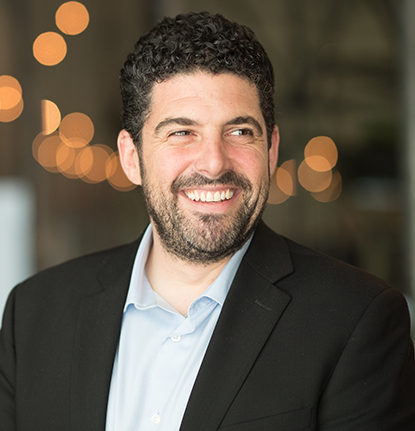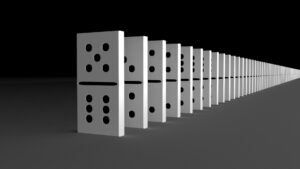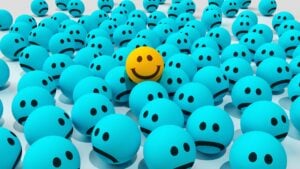“The biggest takeaway for me from the show,” says Jha, “as someone being an academic, it’s important to really understand your field from the commercial perspective, how people are understanding it, how it’s getting interpreted, and at times misinterpreted. So what helps is, when you really see people talking about design thinking or innovation, from the place that they are coming from, the value that they see, the value that they don’t see.”
Jha adds, “As a person in academics, it helps me on a very personal level. How can I boost the jargons around it, the myths surrounding it? How can you simplify it more for people to get the core of what you’re trying to express? My FEI talk was also around this, how sometimes firms like design thinking, innovation, human centered design, these things are watered down just because of how they are represented. So that’s my biggest take away.”
How much of the application of these phrases such as design thinking, heard at FEI, is a kind of “innovation theater,” another concept that’s come up here as opposed to a true understanding?
“I would say it’s mostly people trying to work out and make do with what’s really true and at the core of it because most of the people that are here are really embedded into their innovation functions, they understand it, for the most part,” observes Jha. “What I would still say is, less than a theater for me, for most of the people, it’s how much capability do they have and how much leadership they can have in their organization—and how they are set up to bring innovation. Even if you have a leadership title, sometimes you don’t have that strength in the organization to really bring that change. And we heard a lot of that around this challenge. The culture isn’t supportive. There isn’t the buy in from the C suite even if you are the VP, but you need that C suite to come in for resources.”
Still, despite these mostly positive directions and the best efforts of many in the innovation community, there can be misunderstandings or misinterpretations as we all learn to speak the same language of innovation.
“One misunderstanding is innovation being misunderstood as invention,” notes Jha. “Whenever you think about innovation, we think about what we have to do is come up with something entirely new. And that is invention. Take computers, for example. Some people do say it as innovation, but the distinction that I make is, multiple rounds of innovation happened after the computer came in, and brought us to a sleek tablet or the smartphones that we have in our pockets. That is innovation.”
Jha adds, “The difference is invention is a creation of a product, process or service for the very first time. While innovation really increases the value of a product, process, or service that might already be out there. Let’s say the technology is out there, but isn’t usable for you as a human, that’s just an invention out there. But when you are able to use it to make your life better, you find value out of it, that’s when real innovation happens.”
The second misunderstanding applies closer to design thinking and human centered design. Jha continues, “Of course, a huge part of any innovation being successful is when we talk to users, talk to the people. If you ask users, what do they want, they won’t know because the innovation is not yet out there. For example, people also talk about if Apple would have wanted to ask, do you want a smartphone with just a screen on it? No buttons. Everyone would have said no. So the myth here or misunderstanding is when we say talk to your users, it doesn’t mean ask them what they want next. Talk to them to really understand what their values are, what their aspirations are in life, and what are the challenges they’re facing.”
Seeing Through the Desirability Lens
While there are examples of transformational innovation, such as the evolution of smartphones, the industry is often being turned to and asked to do business model innovation. Digital transformation from within. This takes a different type of skill set.
“Whenever we talk about innovation, there’s a very popular model which is called the DVF model, which is desirability, viability, and feasibility. And it says that the real innovation or breakthrough happens at the overlap of the three. Desirability is what humans value, viability is how can you come up with a new business model and how the business is structured, whereas feasibility is basically do we have the technology that we can use to get closer to the innovation that we want to create.”
Jha continues, “Whenever an organization just focuses on coming up with a new business model or let’s use this technology that’s out there, it doesn’t work. Or if you just focus on human aspiration it doesn’t work. Because you’re missing one part of it. So there can be more focus to one of these factors. You know, there’s new technology out there. You find if there is a human need and then you create a business model around it. It’s always beneficial to think from all these three lenses, and you cannot let the desirability lens go. Because at the end of the day, people have to use it. If you’re creating a business model and how let’s say a subscription model can be a part of it that goes to the customers. Are they open to that? So there’s always that aspect of it a little bit to keep in mind.”
See the video from FEI for more on the inner workings of innovation, the impact of AI, what the future might look like and the rest of Seth Adler’s conversation with Prapti Jha.
Contributors
-

Seth Adler heads up All Things Insights & All Things Innovation. He has spent his career bringing people together around content. He has a dynamic background producing events, podcasts, video, and the written word.
View all posts -

Matthew Kramer is the Digital Editor for All Things Insights & All Things Innovation. He has over 20 years of experience working in publishing and media companies, on a variety of business-to-business publications, websites and trade shows.
View all posts














































































































































